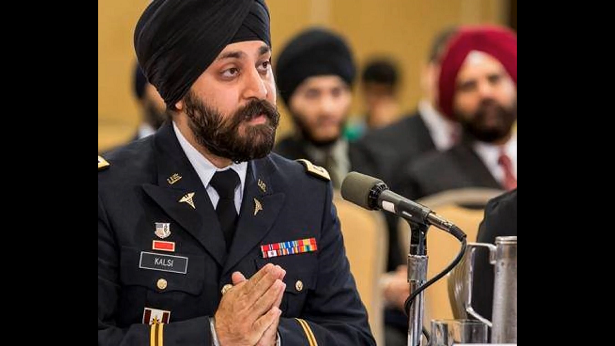जब पाकिस्तान ने छंब सेक्टर में हमला किया तो जनरल चौधरी चाहते थे कि पाकिस्तान का सामना अख़नूर से आगे बढ़ कर किया जाए.
लेकिन जनरल हरबख़्श सिंह ने चौधरी से कहा कि आप सरकार से मुझे अंतरराष्ट्रीय सीमा पार कर लाहौर की तरफ़ बढ़ने की अनुमति दिलवाइए.
जनरल चौधरी और जनरल हरबख़्श सिंह का वो शो डाउन
जनरल चौधरी कुछ हिचकिचा रहे थे. लेकिन जनरल हरबख़्श सिंह ने इस पर ज़ोर देते हुए कहा कि अगर आप सरकार से ये बात नहीं कह सकते तो मुझे प्रधानमंत्री लाल बहादुर शास्त्री से मिलने की अनुमति दीजिए.
अंतत: उन्हें 3 सितंबर को पंजाब में बढ़ने की अनुमति मिली.
हरबख़्श सिंह अपनी आत्मकथा ‘इन द लाइन ऑफ़ ड्यूटी’ में लिखते हैं, “इस बीच पाकिस्तान को ये आभास देने के लिए कि हम अख़नूर पर उसके हमले का जवाब देने जा रहे हैं, मैंने अपने इंजीनियरों को पठानकोट-अख़नूर सड़क की मरम्मत करने और जम्मू तवी के ऊपर के पुल को और मज़बूत करने के आदेश दिए.”
“इसका पाकिस्तान पर क्या असर पड़ा मैं कह नहीं सकता, लेकिन इतना ज़रूर कह सकता हूँ कि तीन दिन बाद जब हमने लाहौर की तरफ़ मार्च शुरू किया तो वो आश्चर्यचकित रह गए.”
अपनी आत्मकथा ‘इन द लाइन ऑफ़ ड्यूटी’ में हरबख़्श सिंह लिखते हैं, “नौ सितंबर की रात ढाई बजे सेनाध्यक्ष ने मुझे फ़ोन मिलाया. उनका कहना था कि भारतीय सेना को पाकिस्तानी हमले से अलग-थलग होने से बचाने के लिए मुझे अपनी सेना को ब्यास नदी के पीछे ले आना चाहिए.”
“इसका मतलब था पंजाब के बहुत बड़े भूभाग, जिसमें अमृतसर और गुरदासपुर के ज़िले थे, ख़ाली कर देना. मेरी नज़र में भारतीय सेना के लिए ये 1962 के चीन हमले से भी बुरा झटका होता.”
जनरल हरबख़्श सिंह ने ये आदेश मानने से इंकार कर दिया.
वो अपनी आत्मकथा में लिखते हैं, “मैंने जनरल चौधरी से कहा कि चूँकि ये एक रणनीतिक आदेश है, इसलिए उन्हें इसे युद्ध भूमि में ही आकर देना होगा, वर्ना आप मुझे लिखित आदेश दीजिए. तय हुआ कि वो मुझसे अंबाला में मिलेंगे. मुझे ये देखकर आश्चर्य हुआ कि जनरल चौधरी के जहाज़ के साथ एक एस्कॉर्ट जहाज़ भी था.”
“मैंने स्टेशन कमांडर से उसी समय कहा कि सीमा पर लड़ रहे हमारे सैनिकों को रोज़ इस तरह के विमानों की दरकार होती है. मैं और चीफ़ सीधे ऑपरेशन रूम में गए जहाँ हम दोनों के बीच काफ़ी गर्मागर्मी हुई.”
“एक समय वो इतने उत्तेजित हो गए कि मुझे कहना पड़ा कि आपके लिए मेस से बियर मंगवाऊँ? लेकिन मैंने उन्हें ये स्पष्ट कर दिया कि अगर वो कोई रणनीतिक आदेश देना चाहते हैं तो उन्हें मेरे साथ फ़्रंट पर आना होगा और तब मैं तय करूंगा कि मैं उस आदेश का पालन करूँगा या नहीं.”
मेजर जनरल पलित भी लिखते हैं, “हरबख़्श सिंह ने जनरल चौधरी से कहा कि वो इतने महत्वपूर्ण मसले पर मौखिक आदेश का पालन नहीं करेंगे. इसके लिए आपको मुझे लिखित आदेश देने होंगे. लिखित आदेश कभी नहीं आए. कुछ ही घंटों में हालात बदल गए जब खेमकरण में भारत के सेंचूरियन टैंकों ने अपने से कहीं बेहतर पैटन टैंकों को धूल चटा दी.”
सामरिक मामलों के एक और विशेषज्ञ के. सुब्रमण्यम ने भी लिखा है कि जनरल चौधरी ने प्रधानमंत्री शास्त्री से भी ब्यास नदी के पीछे हटने की अनुमति माँगी थी, लेकिन उन्होंने इसकी इजाज़त नहीं दी.
टीकाकार इंदर मल्होत्रा और कुलदीप नैयर ने भी बीबीसी को बताया कि अगर चौधरी की चली होती तो भारत को बहुत बड़े हिस्से से पीछे हटना पड़ता.
जनरल हरबख़्श सिंह की बेटी हरमाला गुप्ता याद करती हैं कि लड़ाई के दौरान उन्होंने उन्हें घर पर बहुत कम देखा. वो आते भी थे तो हमेशा अपने कमरे में अपने कमांडरों के साथ टेलीफ़ोन पर बात करते रहते थे ये जानने के लिए कि युद्ध में क्या हो रहा है.
कभी-कभी कमरे से बाहर निकलते थे लेकिन हमें कुछ भी नही बताते थे कि लड़ाई में क्या हो रहा है. हम बस अनुमान लगा सकते थे कि सब कुछ ठीक ही चल रहा है.
उनके एडीसी रहे कैप्टन अमरेंदर सिंह कहते हैं कि वो बहादुरी के हर काम को सराहते थे, लेकिन पेशेवर ग़लती को वो कभी भी माफ़ नहीं करते थे.
1965 में भी जब मेजर जनरल निरंजन प्रसाद आशानुरूप काम नहीं कर पाए तो बीच लड़ाई में भी वो उनको हटाने से नहीं हिचके. उसी तरह जब मेजर जनरल चोपड़ा ने अख़नूर के मोर्चे पर अकुशलता दिखाई तो उन्हें भी हटाने में उन्हें कोई संकोच नहीं हुआ.
उस ज़माने में जनरल चौधरी के स्पेशल असिस्टेंट रहे और बाद में भारत के सेनाध्यक्ष बने जनरल वीएन शर्मा कहते हैं, “जनरल हरबख़्श सिंह बहुत आला अफ़सर थे. लड़ाई के दौरान एक अफ़सर का डटकर खड़ा होना और अपनी कमांड चलाना जैसा वो चाहे, बड़ी ख़ूबी की बात होती है. उनका मानना था कि अगर आप दूसरे देश में लड़ रहे हैं तो ज़रूरत पड़ने पर आप अपने सैनिकों को पीछे ले जा सकते हैं.”
“लेकिन अगर आप अपने ही देश में लड़ रहे हैं तो पीछे जाने का विकल्प आपके पास है ही नहीं, क्योंकि वो हमारी ज़मीन है, हमारा घर है. हम अपने लोगों को दुश्मन के हवाले कैसे कर सकते हैं. उनके इस रवैये ने देश के नेतृत्व को काफ़ी आत्मविश्वास दिया.”
खाना बरबाद करना पसंद नहीं
हरमाला गुप्ता कहती हैं कि उनका पहला परिवार भारतीय सेना थी. हम दूसरे नंबर पर आते थे. उनको संगीत का काफ़ी शौक था.
पुराने गाने उन्हें बहुत पसंद थे. कभी-कभी वो ख़ुद भी गाने की कोशिश करते थे.
उन्हें ‘चौदवीं का चाँद’ और ‘प्यासा’ के गाने बहुत पसंद थे और वो अक्सर ‘प्यार मांगा लेकिन काँटों का हार मिला’ गाना गुनगुनाया करते थे.
वो अक्सर अपनी गाड़ी ख़ुद ड्राइव करते थे और बहुत रैश ड्राइवर थे. उस ज़माने में उनके साथ पायलट जीप चला करती थी और वो अक्सर अपनी पायलट जीप से आगे निकल जाते थे.
हरमाला कहती हैं, “अनुशासन का उनके जीवन में बहुत महत्व था. हमें नाश्ते और दिन के खाने के बीच कुछ भी खाने की मनाही थी.”
वो बताती हैं, “कोका कोला भी हमारे लिए मना था. वो जापान में युद्धबंदी भी रह चुके थे, इसलिए उन्हें खाने की अहमियत मालूम थी.”
“उनको दो साल तक खाना नहीं मिला, इसलिए वो हमेशा ज़ोर देते थे कि खाना बरबाद नहीं होना चाहिए. जब हम ये कहते थे कि हमें ये नहीं खाना तो उनको ये बात बहुत नागवार गुज़रती थी.”
हर पाकिस्तानी सैनिकों का सम्मान
हरमाला बताती हैं, “उन्होंने पाकिस्तान में युद्ध मे जीती गई हर मस्जिद की मरम्मत करवाकर उसे वापस किया. इसके अलावा उन्हें जिस भी पाकिस्तानी सैनिक का शव मिला, उसे उन्होंने पूरे सैनिक सम्मान के साथ दफ़नवाया.”
“मैं ये भी बताना चाहूँगी कि पाकिस्तानी की तरफ़ से उनके काउंटरपार्ट जनरल बख़्तियार राना उनके दोस्त और बैचमेट थे. वो लाहौर गवर्नमेंट कॉलेज में साथ-साथ पढ़े थे. मुझे याद है कि जब युद्ध विराम के बाद भारत और पाकिस्तान में बातचीत हो रही थी तो संयुक्त राष्ट्र से भेजे गए चिली के जनरल मरंबियो ने पाकिस्तान का टेंट एक तरफ़ रखा और भारत का दूसरी तरफ़.”
“जब मेरे पिता वहाँ पहुंचे तो उन्होंने कहा, कहाँ हैं जनरल राना मैं उनसे मिलना चाहता हूँ. कितने साल हो गए हैं उनसे मिले हुए. उन्होंने जैसे ही जनरल राना को देखा अपनी बाँहों में भर लिया. आश्चर्यचकित जनरल मरंबियों ने कहा कि मुझे तो समझ में ही नहीं आ रहा कि तुम लोग लड़ क्यों रहे हो आपस में. लड़ाई किस बात पर है?”
शास्त्री ने तलवार भेंट की
1965 के युद्ध के बाद दिल्ली के सिख समुदाय ने बंगला साहिब गुरुद्वारे में प्रधानमंत्री लाल बहादुर शास्त्री और जनरल हरबख़्श सिंह को सरोपा देकर सम्मानित किया.
उन्होंने लाल बहादुर शास्त्री को एक तलवार भेंट की जिसका क़द उनसे भी बड़ा था. शास्त्री ने अपने बगल में बैठे जनरल हरबख़्श सिंह को हाथ पकड़ उठाया और वो तलवार उन्हें भेंट कर दी.
शास्त्री बोले, “मैं तो धोती प्रसाद हूँ, पर मेरे जनरल धोती प्रसाद नहीं हैं.” वो तलवार आज भी जनरल हरबख़्श सिंह के परिवार के पास है
-BBC








